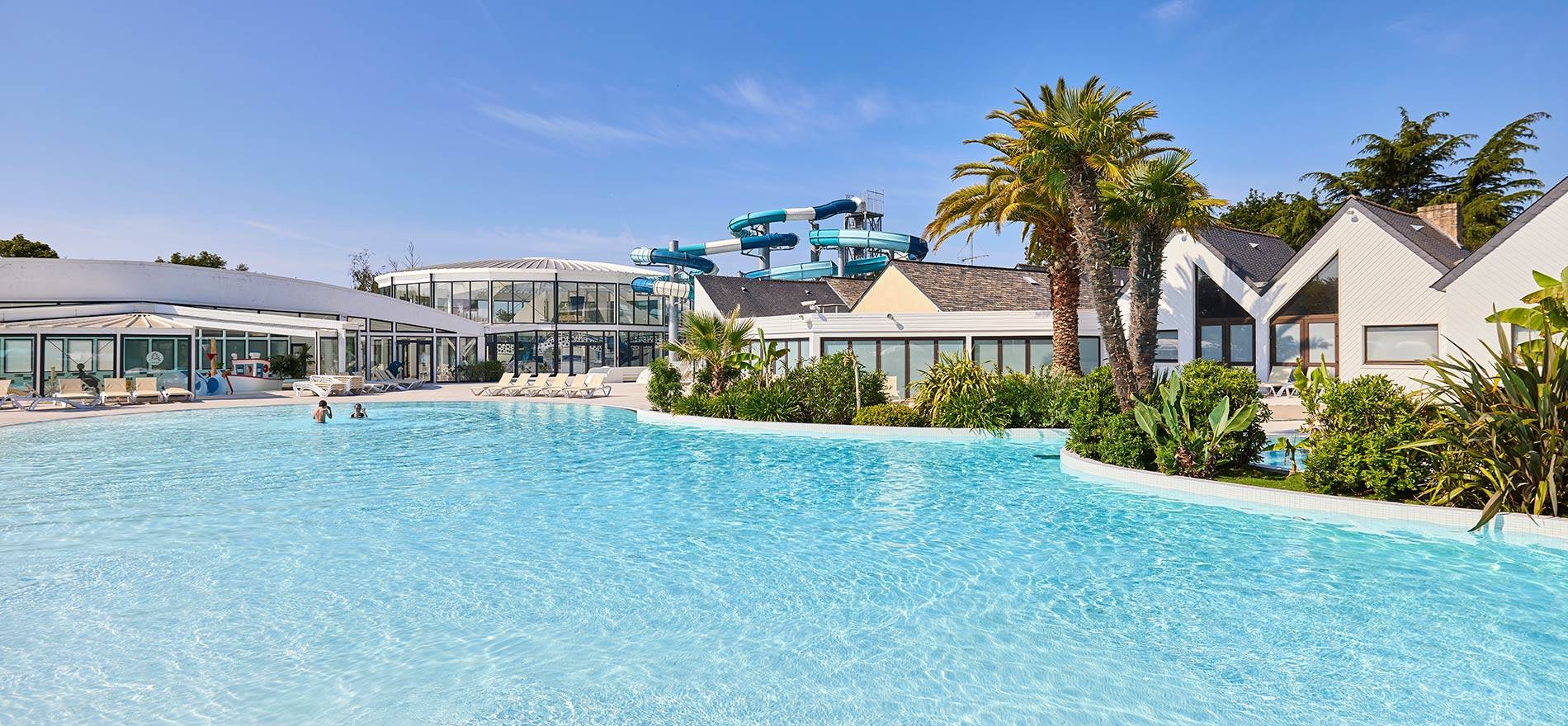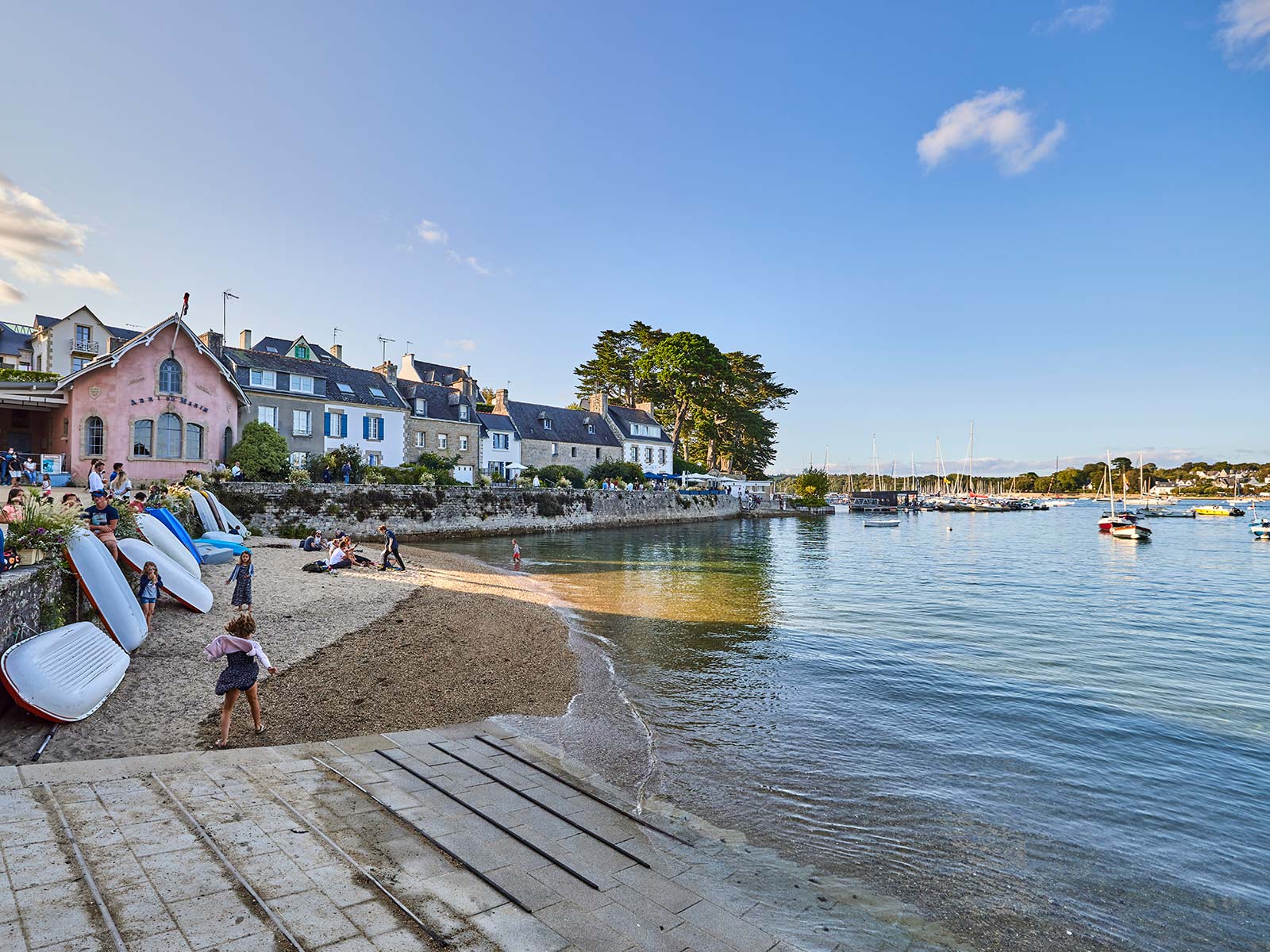
Campsite near Sainte-Marine: Combrit's village and harbour
View itinerarySaint-Marine is located near the campsite on the other side of the bridge "le pont de Cornouaille". Discover the traditional "bigouden" towns of Pont L'Abbé, Loctudy, and Ile-Tudy. There's so much to visit in southern Finistère!

The best view of Bénodet and over the Odet
Sainte-Marine is at the entrance to the bay or "aber" (in Breton) of the Odet. In the Middle Ages, Sainte-Marine's port specialised solely in the transport of wines from Bordeaux and Saintonge to the English Channel and the North Sea. In the 15th century, this community of fishermen was comprised of about twenty families.
The port is now mainly a coastal resort and marina. In the summer, a "bac" (small pedestrian boat) takes you across the Odet from Sainte-Marine to Bénodet.
L'Abri du Marin
Recognizable by its pink façade, the "Abri du Marin" (fisherman's shelter) in Saint-Marine has always been full of life (rope work lessons, library, meeting room and exhibition, meals for seniors, shows…).
It is now a museum and is open to the public. The project preserves the cultural and maritime shelter offering an exhibition space dedicated to Jacques de Thézac and his works. This memorial has kept its soul. The atmosphere of the shelter is restored to how it was in 1910, when it opened.
Sainte-Marine lighthouse
Sainte-Marine lighthouse is located on Combrit headland beside the fort. Located at the mouth of the Odet river, it is called "feu de Combrit". The lighthouse was built in 1885. It was eletrified in 1943, then damaged in 1944 by German troops. It creates, with the light of the Bénodet lighthouse, a northern alignment, to guide boats into Bénodet harbour.
L’île Tudy
“Ile-Tudy” comes from the name of a chapel built in the 14th century in honour of Saint Tudy. Ile-Tudy is a division of the former parish of Combrit, dependent on the Bishop of Cornwall. It became a peninsula when a dam was built in 1853 and was one of the largest fishing ports in the Finistère. It is now a coastal resort, welcoming no less than 8,000 tourists during the summer season who flock to its beautiful beaches.
Loctudy
Loctudy owes its name to the monk, Tudy, from Great Britain. Fleeing his country which was invaded by the Saxons, he settled in Loctudy in a hermitage around 450. In the 11th century, the arrival of a new and important religious community and the construction of an abbey church was an important milestone for the development of the neighborhood.
After World War II, the agricultural industry started to decline and the town turned to maritime activities. Loctudy became one of the largest ports in Pays Bidouden, for fishing as well as for the leisure related maritime activities.
Pont L'Abbé
Historic capital of Pays Bigouden, Pont L'Abbé is the city that has the most historical interest in the area. Loctudy Monks are behind the creation of the city.
The Château de Pont L'Abbé, built on a strategic site in the 13th century, now houses the city hall and the Bigouden museum. Installed in the dungeon of the castle, the museum boasts a large collection of costumes, dresses and furniture.

